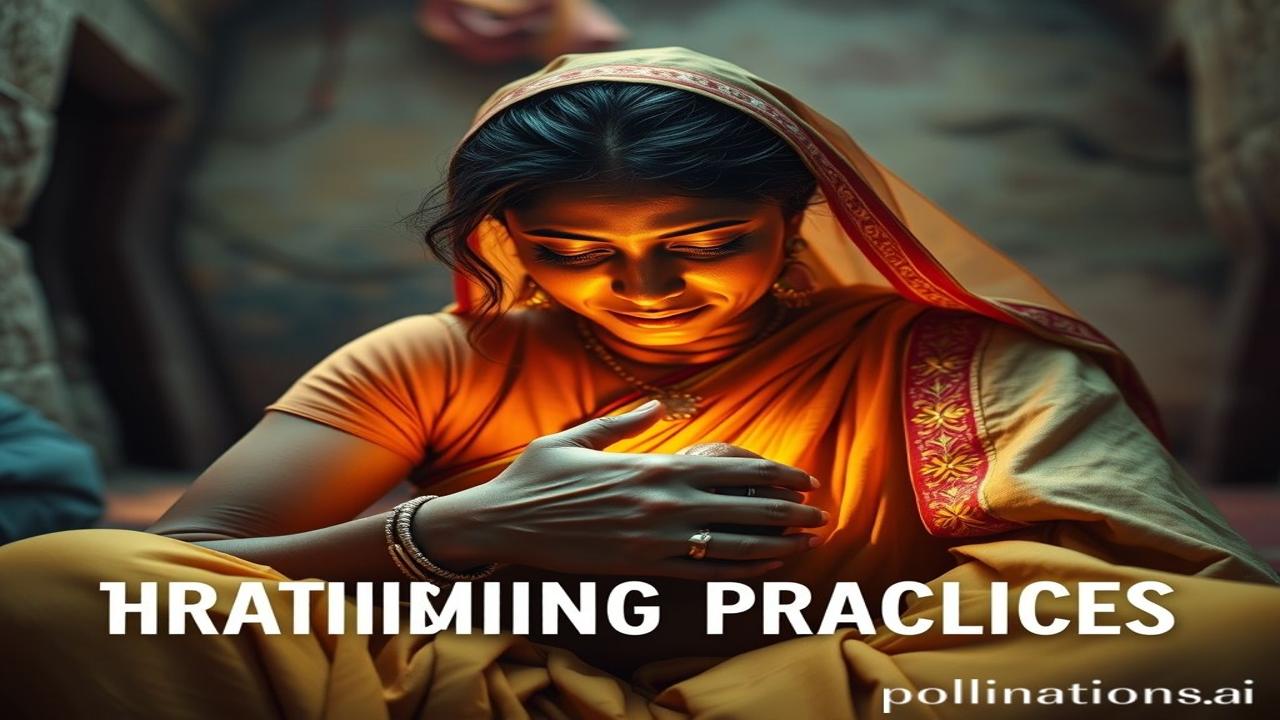Aai Ki God Mein: Unraveling the Stories of Traditional Birthing Practices in India
Kabhi socha hai, jab hospital nahin the, doctors nahin the, toh hamari maaon, daadiyon ne kaise janam diya tha? Waqt ki dhool mein kuch aisi kahaniyan chhupi hain, jo aaj bhi hamari nas-nas mein basi hain. Let’s take a trip down memory lane and explore the world of traditional birthing practices and the amazing women who facilitated life – the midwives or ‘dais’ of India.
Traditional Birthing Practices: A Historical Tapestry
What exactly are traditional birthing practices? Simply put, they are the methods and rituals used for childbirth before modern medical interventions became widespread. In India, these practices are deeply rooted in Ayurveda, local customs, and generations of passed-down wisdom.
When and Where? These practices have been around for centuries, probably millennia, across the entire Indian subcontinent. From the snow-capped Himalayas to the sandy beaches of Kerala, each region had its own unique blend of rituals, herbal remedies, and skilled birth attendants. Think of the Indus Valley Civilization – archaeological evidence suggests even then skilled midwives were likely assisting births!
Why so Important? Because for the vast majority of Indian history, these were the only birthing options available. They weren’t just about delivering a baby; they were about ensuring the health and well-being of both mother and child, steeped in cultural beliefs and spiritual significance. Yeh practices aaj bhi humari culture aur heritage ka ek important hissa hain.
The Dai: Guardian of Life
The cornerstone of traditional birthing was, and often still is, the dai (midwife). These weren’t just people trained in techniques; they were community figures, often women of immense experience and wisdom.
A Dai’s Day: Imagine a small village. Word spreads that a woman is in labor. The dai, often an older woman with years of experience, is summoned. She arrives with her bag of essentials: herbal concoctions, oils, and perhaps a lucky charm. She assesses the situation, offering comfort, guidance, and practical assistance. She uses her knowledge of massage, pressure points, and herbal remedies to ease the mother’s labor.
“Beta, zara yeh tel se malish kar,” she might say, gently rubbing the pregnant woman’s lower back. “Sab theek ho jayega. Shakti tumhare saath hai.”
Ayurvedic Wisdom & Herbal Remedies
Ayurveda played a significant role in prenatal and postnatal care. Specific herbs were believed to aid labor, prevent complications, and promote healing.
- Ashwagandha: Used for strength and energy recovery after childbirth.
- Shatavari: Known for its galactagogue properties (promoting lactation).
- Ginger & Turmeric: Used to reduce inflammation and aid digestion.
These remedies weren’t just about physical healing; they were believed to restore balance and harmony to the mother’s body.
Cultural Significance Today: Echoes of the Past
Even in the age of modern medicine, echoes of traditional birthing practices resonate in India. Many families still incorporate elements of these traditions into their birthing experiences. For example:
- Specific rituals: Certain communities perform specific Pujas or prayers before, during, and after childbirth to ensure a safe and healthy outcome.
- Postnatal diet: The ‘Panjiri’, a nutrient-rich food made with nuts, ghee, and spices, is still a staple in many households for new mothers.
- Respect for the Dai: While hospital births are common, the dai’s role is sometimes acknowledged and respected, especially in rural areas.
These practices remind us of our connection to our ancestors and the wisdom they held. They showcase the enduring strength of Bharatiyata – the inherent Indianness that binds us together.
Modern Midwifery: A Blend of Tradition and Science
Interestingly, there’s a growing interest in midwifery globally, including India. Modern midwives often blend traditional knowledge with scientific understanding, providing a more holistic and personalized approach to childbirth. This resurgence recognizes the value of emotional support, natural birthing techniques, and empowering women during this transformative experience.
Fun Fact & Myth-Buster
Myth: Traditional birthing practices were unsanitary and dangerous.
Buster: While some practices may have posed risks due to lack of knowledge about germ theory, many communities had specific hygiene rituals. They used boiled water, maintained cleanliness, and relied on the dai’s experience to minimize complications.
Visual & Sensory Symphony
Imagine the smell of burning incense filling the air, the gentle chanting of prayers, the rhythmic breathing of the mother in labor. Feel the warmth of the sun on the mud walls of the home, the comforting touch of the dai’s experienced hands. Hear the laughter of family members, the soft cries of a newborn baby – a symphony of life unfolding.
Final Thoughts
The stories of traditional birthing practices and the dais of India are a testament to the resilience, strength, and wisdom of women across generations. They remind us that childbirth is not just a medical event; it’s a deeply personal, cultural, and spiritual experience.
As the Upanishads say, “Janani Janmabhoomischa Swargadapi Gariyasi” – Mother and Motherland are greater than heaven. May we continue to honor and learn from the women who bring life into this world.
